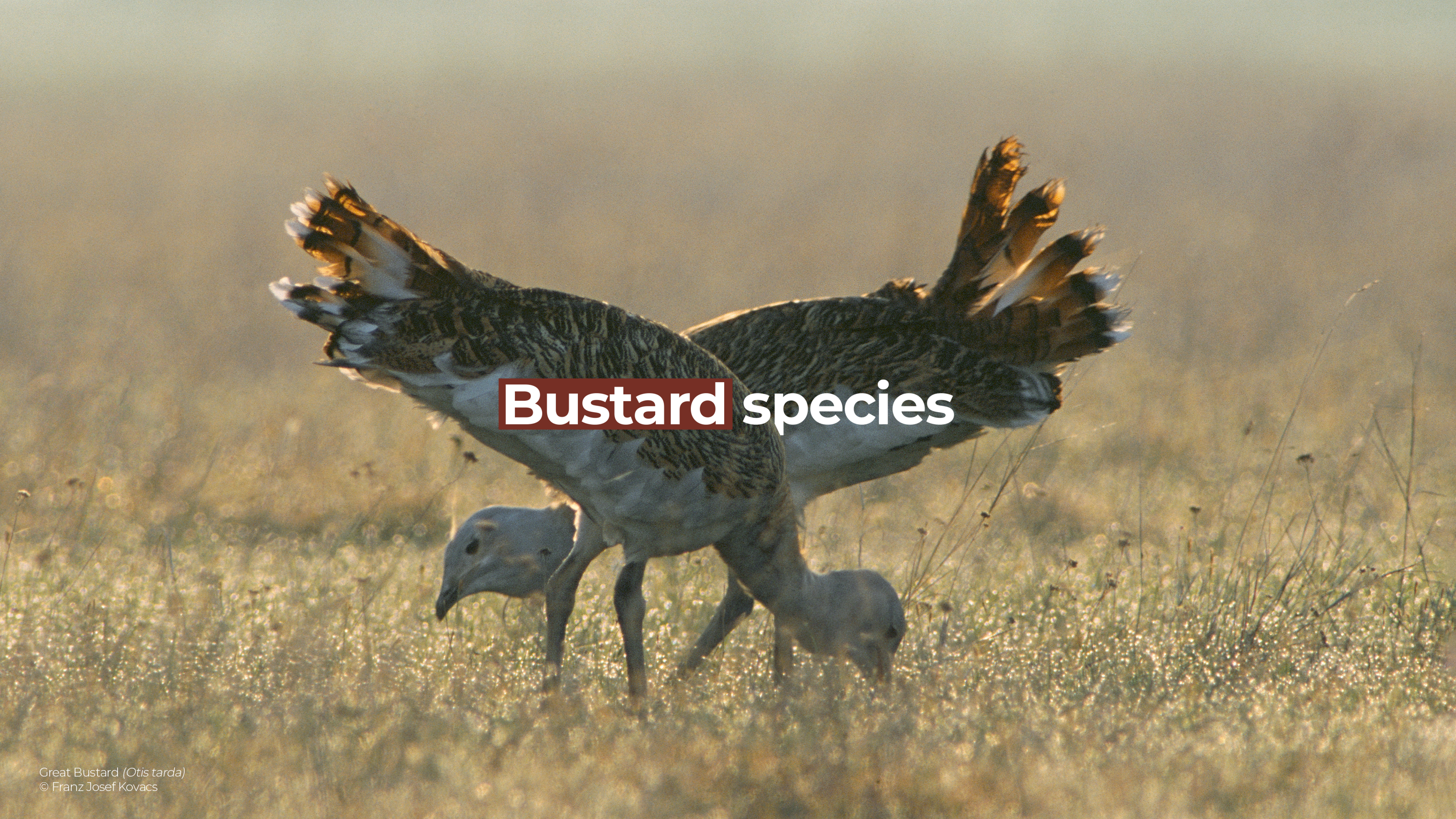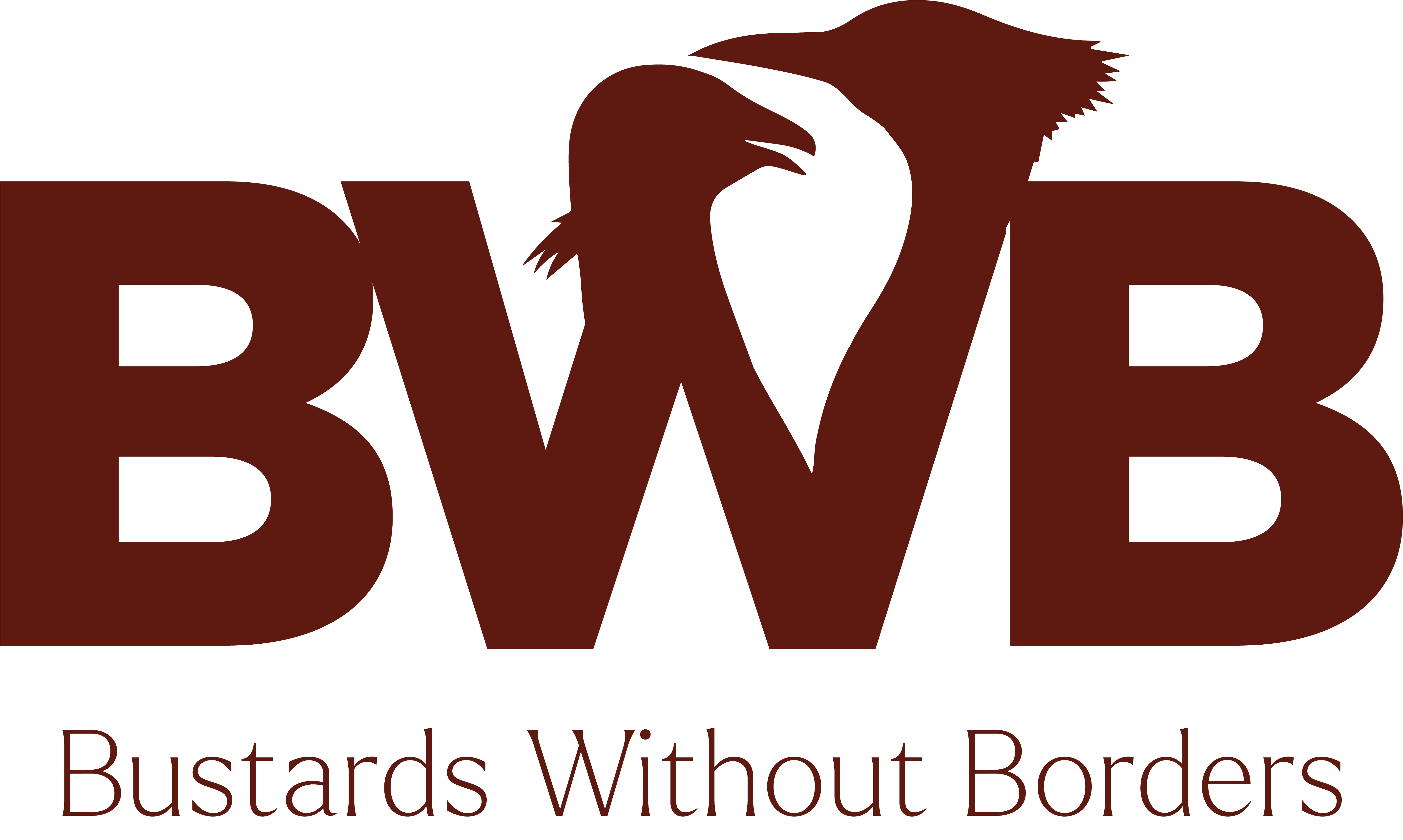
The bustard family consists of 26 species of landbirds, distributed across the eastern hemisphere. These birds include some of the heaviest animals capable of flight, and are famed for their elaborate breeding displays.
Bustards perform important ecological services in the form of insect pest control. They are sensitive to human disturbance and cannot thrive in landscapes that are managed unsustainably. In this way, bustards serve as indicators of responsible landscape management.
Bustards are now the most highly imperiled group of terrestrial birds, with 60% evaluated as threatened or near threatened with extinction. The threats facing bustards include unsustainable hunting and poaching, agricultural intensification, habitat degradation, poisoning with agricultural chemicals, and collisions with powerlines, among others.
BWB aims to unite stakeholders to address these diverse threats through coordinated action.
Take a look at some of the most endangered bustard species. We highlight the urgent need to accelerate targeted conservation efforts to prevent their functional extinction within a few decades.
The Bengal florican (Houbaropsis bengalensis)
One of the world’s rarest bustards and is identified as Critically Endangered by the IUCN with a global population less than 1000 mature individuals. Population trend is decreasing due to on-going modification of its grassland habitat as well as its conversion to agriculture. Being found in Cambodia, India and Nepal.
Great Indian Bustard (Ardeotis nigriceps)
Critically Endangered species because of extremely small population numbering fewer than 140 globally. Population trend is rapid decreasing due to habitat loss and degradation, hunting and direct disturbance. Being found in India and Pakistan.
Great Bustard (Otis tarda)
Rapid population reductions are caused by loss, degradation and fragmentation of its habitat due to agricultural intensification and industrial expansion, extreme or adverse weather in the breeding season, illegal killing, collision with overhead power lines and electrocution, etc. Accordingly Great Bustard is assessed as Endangered. Currently, this species breeds in open grasslands and farmland from northern Morocco, South and Central Europe to temperate Central and East Asia.


